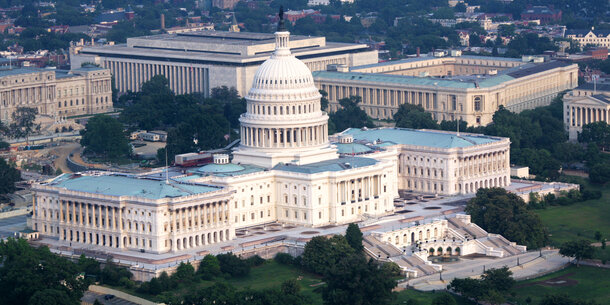The Supreme Court has decided to hear a case that could jeopardize evidence-based policymaking across the federal government. In Loper Bright Enterprises v. Raimondo, the Court is reconsidering the deferential legal standard it has used for nearly 40 years — called Chevron deference after a landmark 1984 case — to evaluate decision-making by federal agencies.
Under the test established in Chevron v. Natural Resources Defense Council, the first step is to determine whether Congress has spoken directly to the precise question at issue. If the law is silent or ambiguous, courts review whether the agency’s action is based on a permissible interpretation of the statute. A ruling that substantially alters or eliminates that standard would put the onus on Congress to legislate with increasing specificity about highly technical issues, a responsibility that legislators are woefully unprepared to shoulder. The looming decision is a reminder that Congress must invest in itself to meet the needs of a 21st-century society, regardless of what the Court holds in this case.
Writing for a unanimous Court in Chevron, Justice John Paul Stevens explained the need for judicial deference to agency decision-making: “Judges are not experts in the field, and are not part of either political branch of the Government. Courts must, in some cases, reconcile competing political interests, but not on the basis of the judges’ personal policy preferences.” In the nearly 40 years since Chevron, thousands of cases have relied on this deferential framework. Notably, it is not a rubber stamp — research suggests that federal agencies prevail in only about 70 percent of legal challenges to their rules.
Chevron deference reflects the Court’s long-standing recognition that the work of government is often complicated and highly technical. While there have been many episodes of abuse of executive power that have undermined the policymaking process, the fact remains that the executive — with more than 120 times the funding of the legislative branch — is currently the only branch with the resources to continually adjust rules in accordance with the best available evidence and changing societal conditions. The results of giving the executive a relatively free hand are tangible and far-reaching, such as enabling safer drugs, cleaner water and air, safer consumer products and automobiles, and improved occupational safety and health for millions of workers.
Over the last 20 or so years, however, the Supreme Court has expressly limited the application of the Chevron test and increasingly avoided using it. Some Supreme Court justices, namely Clarence Thomas and Neil Gorsuch, have suggested that Chevron sanctions an improper delegation of legislative authority to the executive branch, as well as an abdication of the judicial role.
It remains to be seen what, if anything, the Supreme Court will do to the Chevron standard in Loper Bright Enterprises. What is clear, however, is that eliminating or further weakening Chevron deference would mean that Congress could no longer legislate with the expectation that agencies could successfully effectuate legislative goals and mandates based on their deep subject matter expertise.
This latest chapter in the decades-long judicial effort to chip away at the discretion of regulatory agencies is a reminder that Congress is going to have to do a better job at policymaking. More than ever, it cannot count on agencies to execute its legislative goals or respond to new evidence and changing circumstances.
But Congress lacks the scientific and technical expertise to take on more of the responsibility that federal agencies have long held. Staff form the backbone of its ability to do so, but in 2015, the entire legislative branch had fewer than 20,000 employees, several thousand less than in the 1980s.
In particular, Congress has a critical lack of expert staff. Its employees tend to be hardworking and talented, but less than half of them hold advanced degrees. There is also high turnover — the average staffer has served in their current role for only about three years. As a result, congressional staff, capable and dedicated as they may be, too often lack the specialized knowledge and experience necessary to advise on complex policy areas. And they have far fewer internal resources to fill in the gaps in their knowledge than they did in years past.
In addition to insufficient staffing, Congress also lacks adequate access to research and expertise. A recent survey found that less than a quarter of congressional staff were satisfied with their access to high-quality, nonpartisan policy expertise. The Office of Technology and Assessment, a congressional support agency defunded in the 1990s, used to play an important role in advising Congress on science and technology issues. It convened advisory councils of external experts, wrote detailed reports on emerging scientific issues, and helped Congress make sense of complex issues. Congress has yet to recover from the void left by the office.
The House Select Committee on the Modernization of Congress, created in 2019, took crucial first steps to address the institution’s lack of resources, and its work is continuing this Congress in a subcommittee of the House Administration Committee. While these and other recent reforms are important, much more work is required. As it grapples with complicated contemporary issues such as artificial intelligence and rapid technological change, Congress still needs more staff — especially with greater skills. In addition, Congress must do more to help members and staff use high-quality, unbiased expertise by building and retaining networks of experts the body can draw on to testify and advise, as well as institutionalize other ways for Congress to obtain cutting-edge data and research.
Such measures are necessary to empower Congress to serve the federal legislative role that contemporary society deserves, regardless of the outcome in Loper Bright Enterprises.




